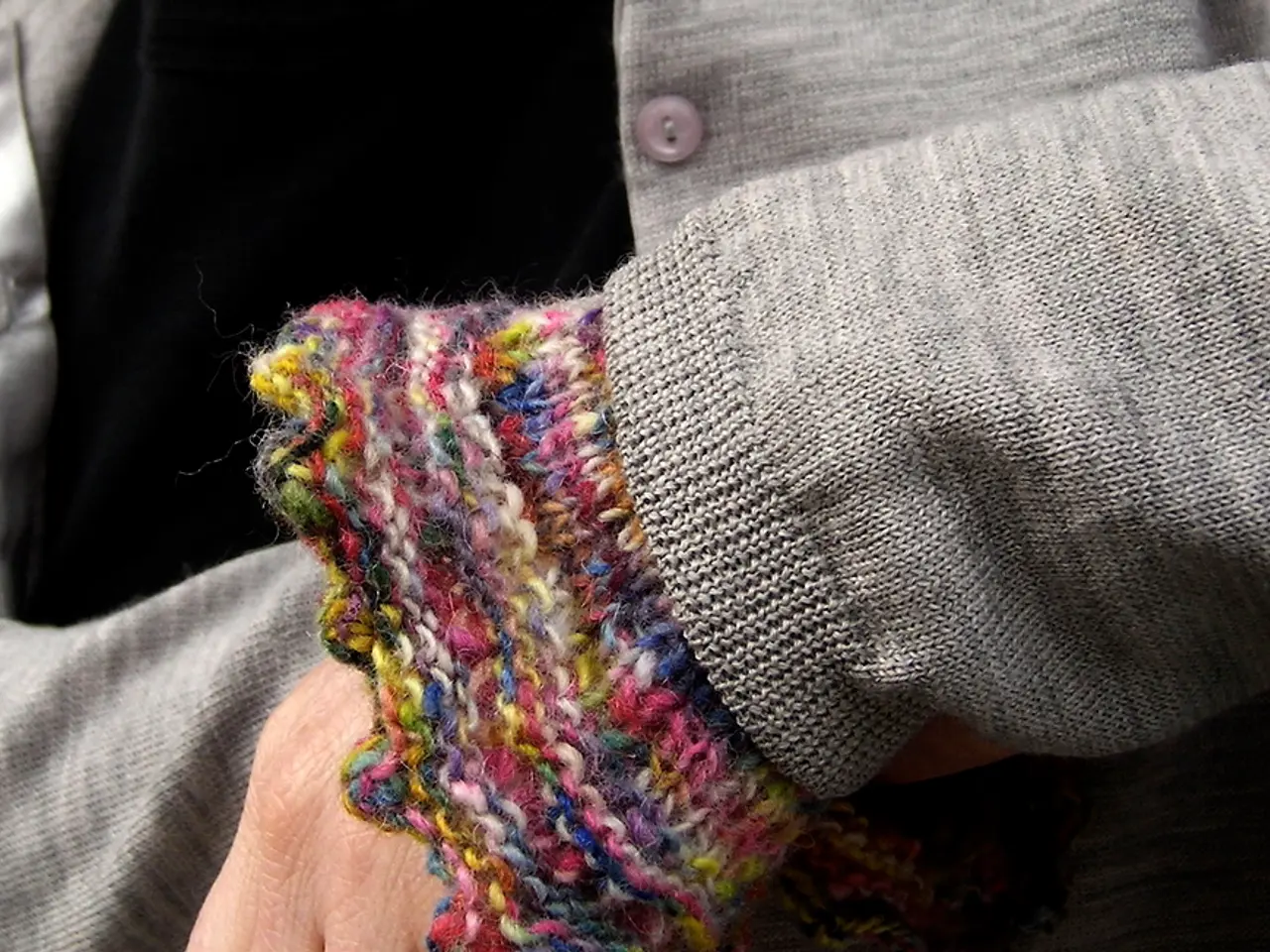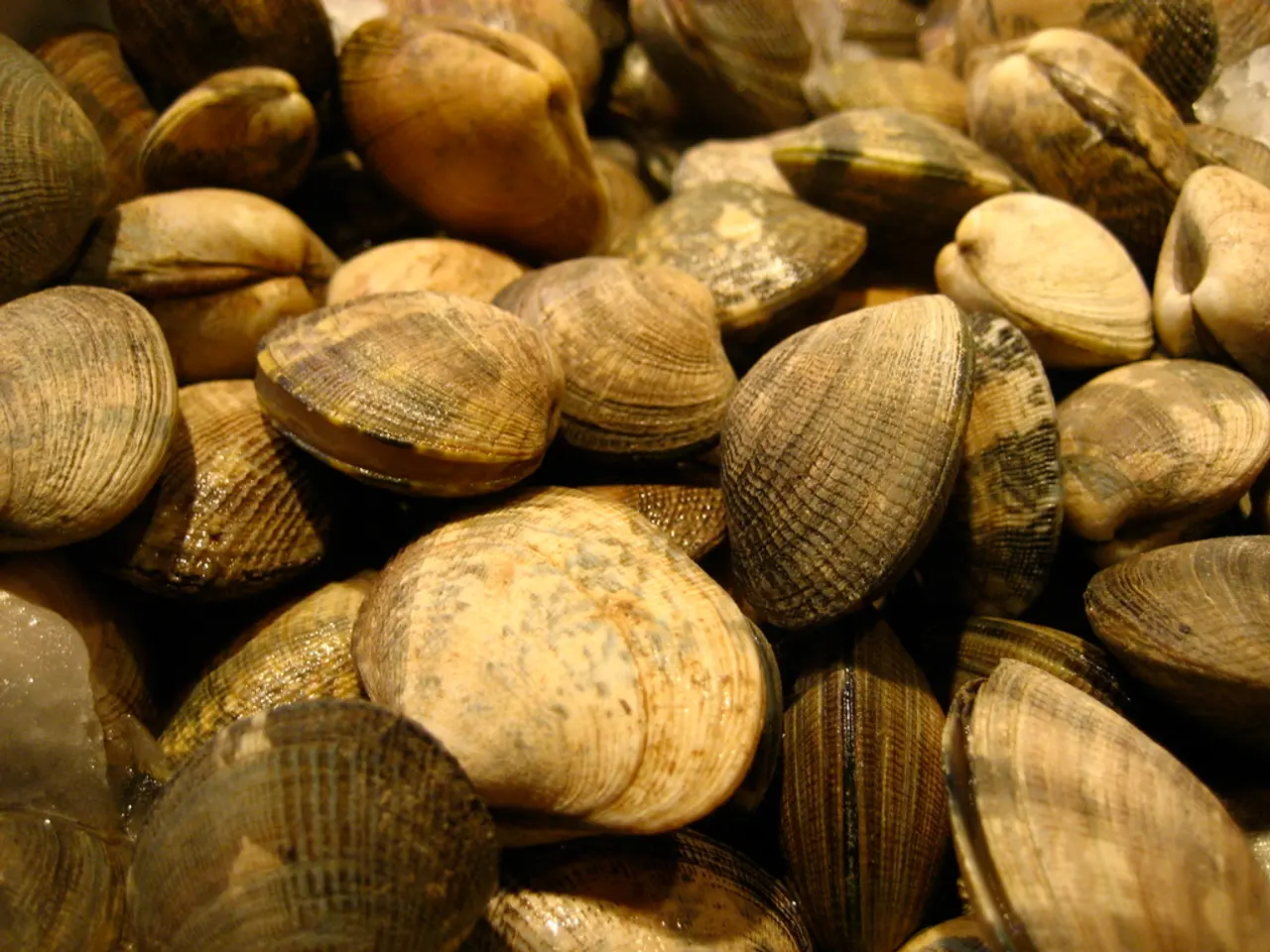Atopic dermatitis, an internal condition: Understanding and management approaches
Atopic dermatitis (AD), a common form of eczema, can affect people in different ways. Two main subtypes of AD have been identified: intrinsic and extrinsic. While both share similar clinical features, they differ significantly in their causes, immunological profiles, and treatment approaches.
Extrinsic AD, also known as allergic AD, accounts for about 60-80% of cases. It is IgE-mediated, meaning it is associated with elevated total and allergen-specific IgE levels. Patients with extrinsic AD often have sensitization to food or environmental allergens and may also experience co-existing conditions such as asthma and allergic rhinitis.
Intrinsic AD, on the other hand, accounts for about 20-40% of cases. Unlike extrinsic AD, intrinsic AD involves normal IgE levels with no allergen-specific IgE sensitization. Its pathogenesis is less clearly linked to allergy but involves immune activation with similar TH2 and higher TH17 responses compared to extrinsic AD.
Both intrinsic and extrinsic AD show similar clinical features, including chronic eczema with itching. Common locations are similar, affecting the face, scalp, flexural areas, and extremities. However, extrinsic AD patients often have a personal or family history of other atopic diseases.
Intrinsic AD patients tend to have normal IgE levels and no allergic sensitization despite similar eczema presentation. The immune profile includes more pronounced TH17 immune activation compared to extrinsic AD.
Treatments for both forms of AD largely overlap, focusing on skin hydration, anti-inflammatory therapies (topical corticosteroids, calcineurin inhibitors), and management of itching. In extrinsic AD, additional management may include allergen avoidance and therapies targeting IgE-mediated pathways, such as biologics (e.g., dupilumab) that inhibit TH2 cytokines. Intrinsic AD treatment focuses on controlling inflammation and skin barrier repair without allergy-targeted approaches, given the absence of IgE sensitization.
People with AD are prone to skin infections that may require immediate attention. Symptoms include a sudden worsening of eczema, fever, flu-like symptoms, painful discolored skin, severe insomnia, or symptoms of depression. To manage AD, doctors recommend taking a lukewarm bath, gently patting dry, and applying a moisturizer to seal in moisture.
The exact cause of intrinsic AD is unknown, but it is believed to involve a combination of genetic mutations, an overactive immune system, and environmental factors. There is currently no cure for intrinsic AD, but specific treatments can help control the condition by managing dry skin, controlling itching, preventing flare-ups and avoiding triggers, and preventing secondary infections or complications.
Home remedies such as aloe vera gel, coconut oil, tea tree oil, cool compresses, avoiding temperature extremes, wearing soft clothing, avoiding rubbing or scrubbing the skin, keeping fingernails short, eating an anti-inflammatory diet, and monitoring AD severity using the Patient Oriented Eczema Measure tool may help relieve some symptoms. In some cases, phototherapy using UV light waves to suppress the body's immune response may be used to treat AD symptoms.
It's important to note that intrinsic AD is not associated with other atopic conditions such as asthma, hay fever, and food allergies. Triggers such as cold, humidity, and stress can lead to the development of symptoms in intrinsic AD.
For those seeking online treatment plans, Optum Now Online Care offers an online treatment plan for eczema in as little as 15 minutes.
In summary, extrinsic AD is allergy-driven with IgE involvement and associated with other atopic diseases, while intrinsic AD is non-allergic without IgE elevation but shows stronger TH17 immune activity. Both share clinical features and standard eczema treatments but may differ in immunomodulatory therapeutic targets.
- Extrinsic AD, a subtype of atopic dermatitis (AD), is linked to elevated total and allergen-specific IgE levels, indicating its IgE-mediated nature. This form often co-exists with other chronic diseases such as asthma and allergic rhinitis.
- Intrinsic AD, on the contrary, lacks IgE sensitization and normal IgE levels, although it demonstrates more pronounced TH17 immune activation compared to extrinsic AD. Unlike extrinsic AD, it is not associated with other atopic conditions like asthma, hay fever, and food allergies.
- For people living with AD, it's crucial to prioritize health and wellness, focusing on skin care in order to relieve symptoms and prevent complications. Home remedies such as aloe vera gel, cool compresses, and wearing soft clothing may prove helpful, while treatment plans can be sought from online resources like Optum Now Online Care.




